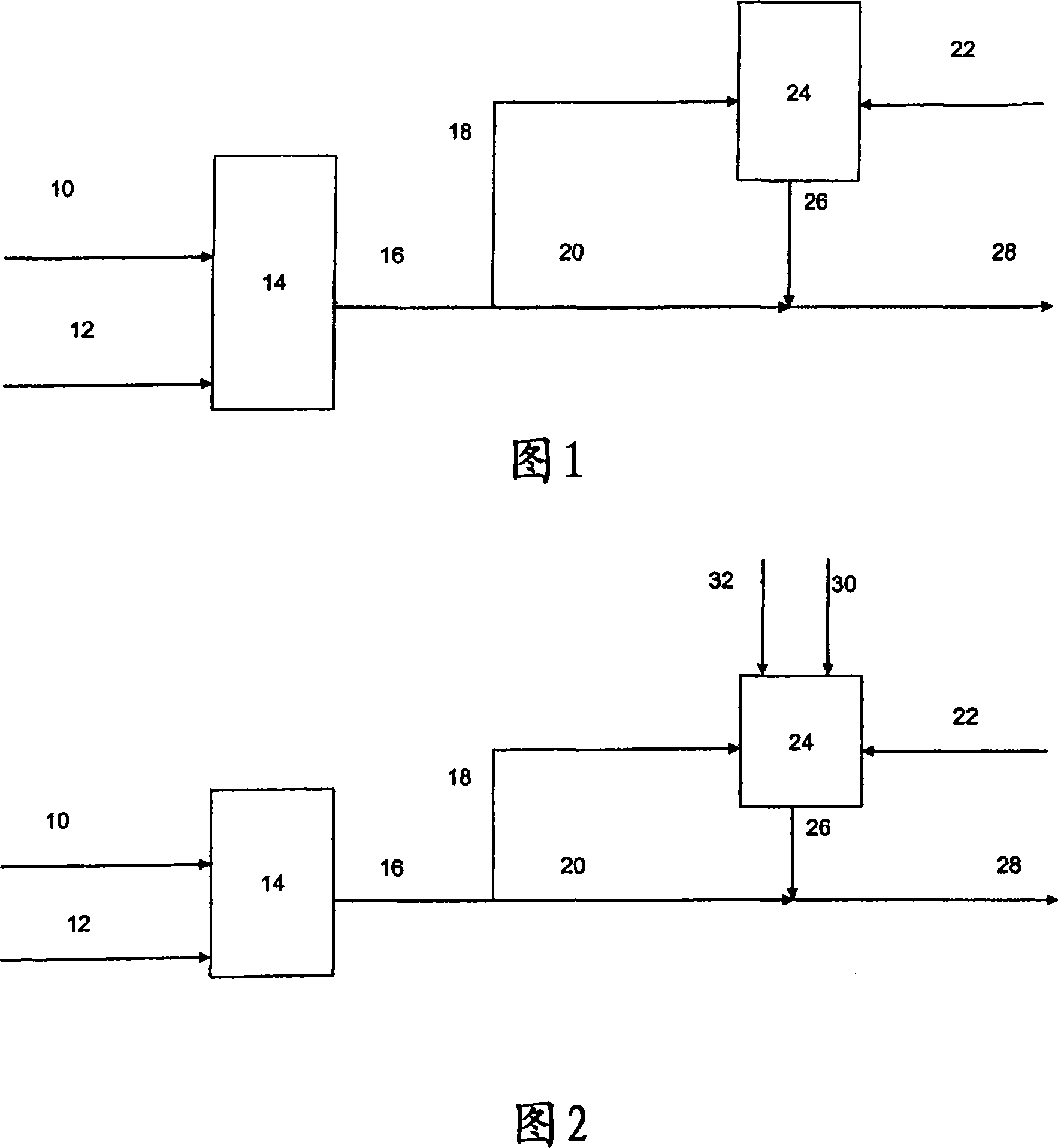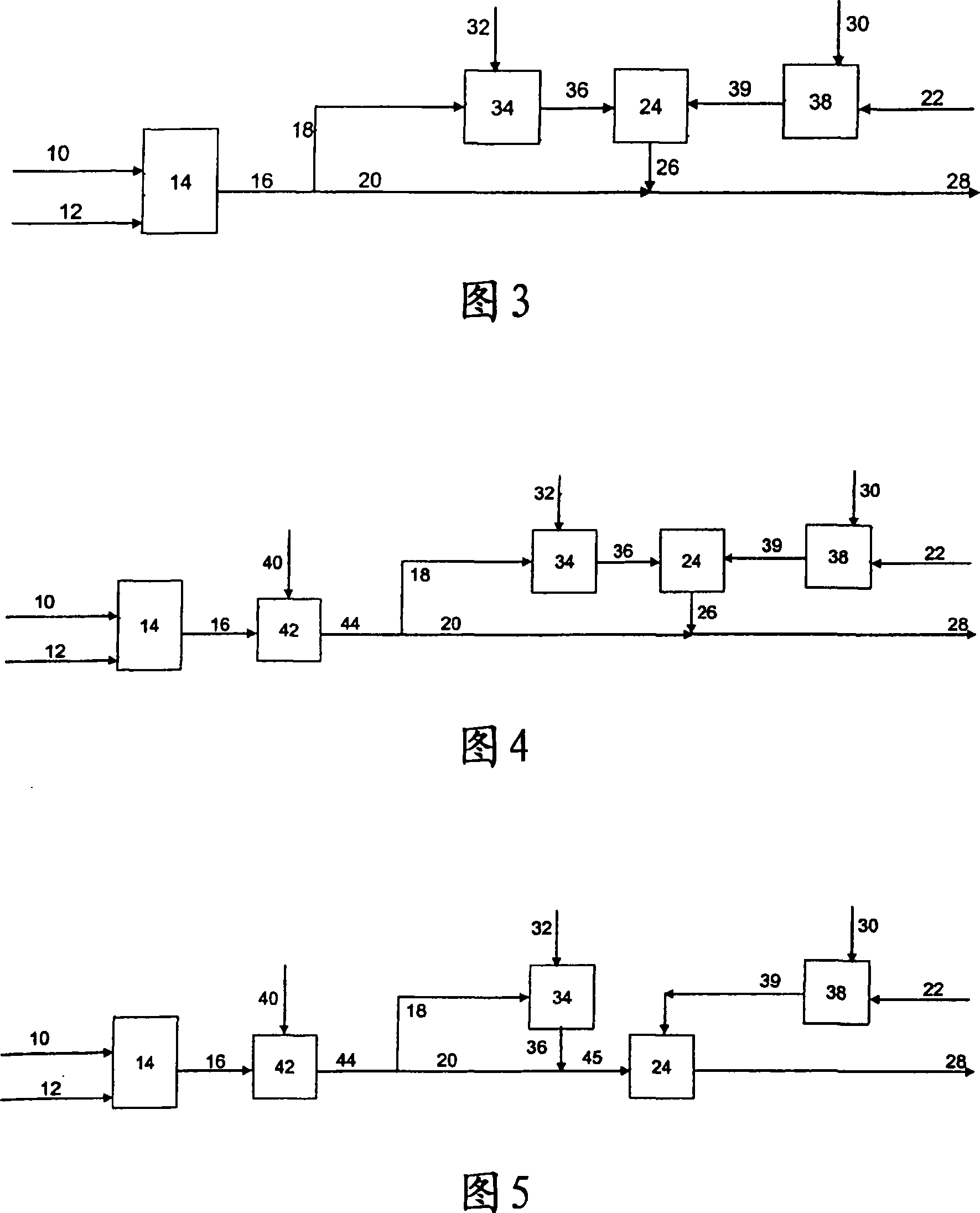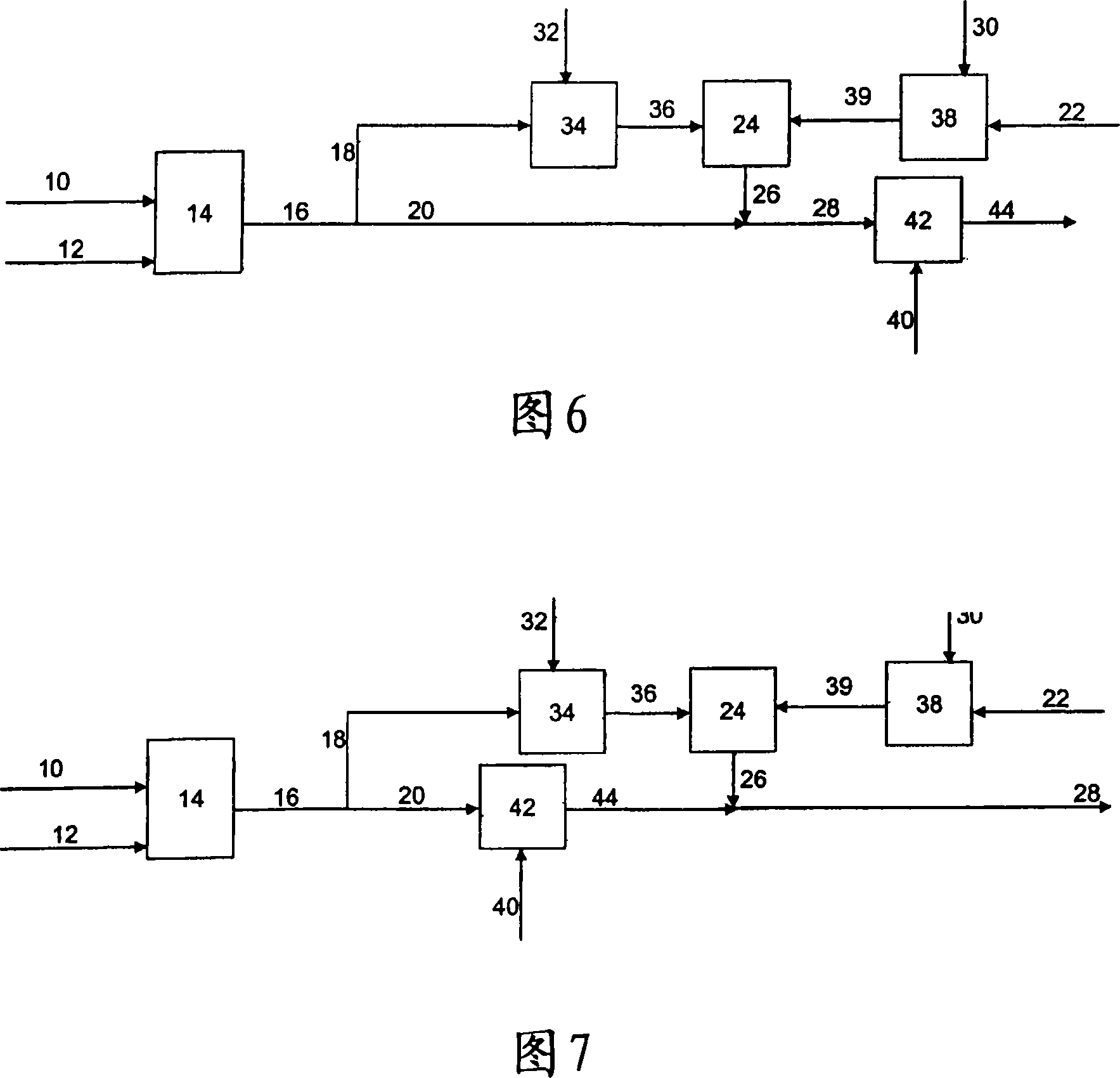Split-stream process for making nanocomposites
A technology of nanocomposite materials and cementing materials, applied in the field of low-permeability nanocomposite materials, can solve problems such as undesired gel formation, and achieve effective methods and low-cost effects
- Summary
- Abstract
- Description
- Claims
- Application Information
AI Technical Summary
Problems solved by technology
Method used
Image
Examples
Embodiment 1
[0252] Polymer part 1: 4 grams of BIMS03-1 (10 wt% PMS, 0.8 mol% Br) were dissolved in 1000 ml hexane in a 2-liter reactor. The polymer cement was heated to 75°C for 2 hours. Separately prepare Cloisite Na + (2 g) and water as an aqueous slurry. An aqueous slurry of clay was added to the polymer cement under high shear mixing and 1 g of ethoxylated (5) cocoalkylamine (Ethmeen C / 15 obtained from Akzo Nobel) was added to obtain a stabilized lotion.
[0253] Polymer part 2: 46 grams of BIMS 03-1 (10 wt% of PMS, 0.8 mol% Br) were dissolved in 500 ml of hexane.
[0254] The cementitious material of polymer part 2 was mixed with the emulsion of part 1 in a high shear mixer for 15 minutes. The polymer / clay nanocomposites were precipitated by adding isopropanol and dried in a vacuum oven at 85°C for 16 hours.
Embodiment 2
[0256] Polymer part 1: 6 grams of BIMS03-1 (10 wt% of PMS, 0.8 mol% Br) were dissolved in 1000 ml of hexane in a 2-liter reactor. The polymer cement was heated to 75°C for 2 hours and 0.8 g of dimethylethanolamine (Aldrich) was added. The reaction was maintained at 75°C for 2 hours. Separately prepare Cloisite Na + (2 g) and water as an aqueous slurry. An aqueous slurry of clay was added to the polymer cement under high shear mixing and 1 g of ethoxylated (5) cocoalkylamine (Ethmeen C / 15 obtained from Akzo Nobel) was added to obtain a stabilized lotion.
[0257] Polymer part 2: 46 grams of BIMS 03-1 (10 wt% of PMS, 0.8 mol% Br) were dissolved in 500 ml of hexane.
[0258] The cementitious material of polymer part 2 was mixed with the emulsion of part 1 in a high shear mixer for 15 minutes. The polymer / clay nanocomposites were precipitated by adding isopropanol and dried in a vacuum oven at 85°C for 16 hours.
Embodiment 3
[0260] Polymer part 1: 6 grams of BIMS 03-1 (10 wt% of PMS, 0.8 mol% Br) were dissolved in 800 ml of toluene in a 2-liter reactor. Then, 0.8 g of dimethylethanolamine (Aldrich) was dissolved in 100 ml of isopropanol and added to the polymer cement. The reaction was heated to 80°C and held at 80°C for three hours. Separately prepare CloisiteNa + (2 g) and water as an aqueous slurry. The aqueous slurry of clay was added to the polymeric cementitious material under high shear mixing and 2 g of ethoxylated (5) cocoalkylamine (Ethmeen C / 15 obtained from AkzoNobel) was added to obtain a stable emulsion . The emulsion was mixed for 15 minutes.
[0261] Polymer part 2: 46 grams of BIMS 03-1 (10 wt% of PMS, 0.8 mol% Br) were dissolved in 500 ml of toluene.
[0262] The cementitious material of polymer part 2 was mixed with the emulsion of part 1 in a high shear mixer for 15 minutes. The polymer / clay nanocomposites were precipitated by adding isopropanol and dried in a vacuum oven...
PUM
| Property | Measurement | Unit |
|---|---|---|
| thickness | aaaaa | aaaaa |
Abstract
Description
Claims
Application Information
 Login to View More
Login to View More - R&D
- Intellectual Property
- Life Sciences
- Materials
- Tech Scout
- Unparalleled Data Quality
- Higher Quality Content
- 60% Fewer Hallucinations
Browse by: Latest US Patents, China's latest patents, Technical Efficacy Thesaurus, Application Domain, Technology Topic, Popular Technical Reports.
© 2025 PatSnap. All rights reserved.Legal|Privacy policy|Modern Slavery Act Transparency Statement|Sitemap|About US| Contact US: help@patsnap.com



